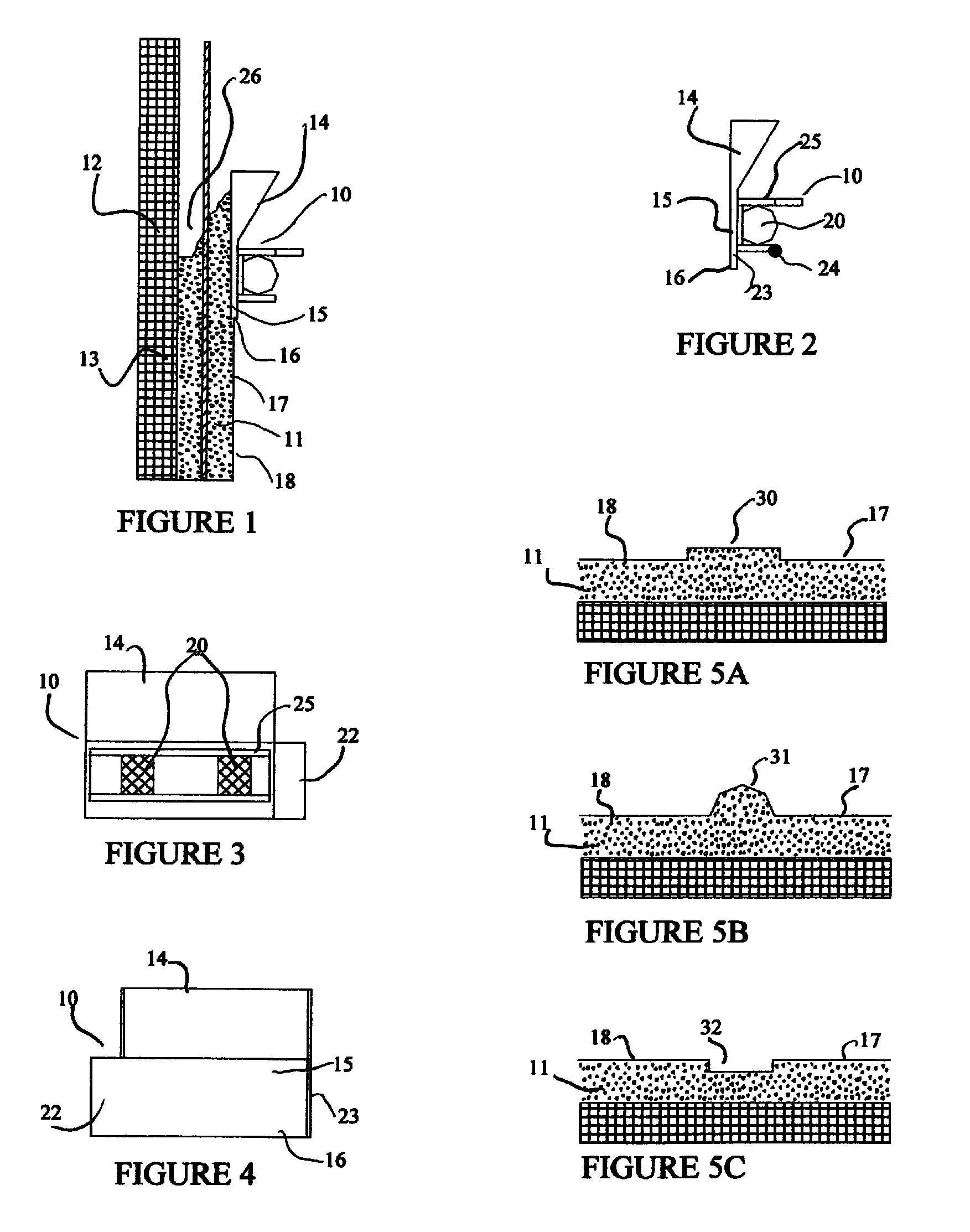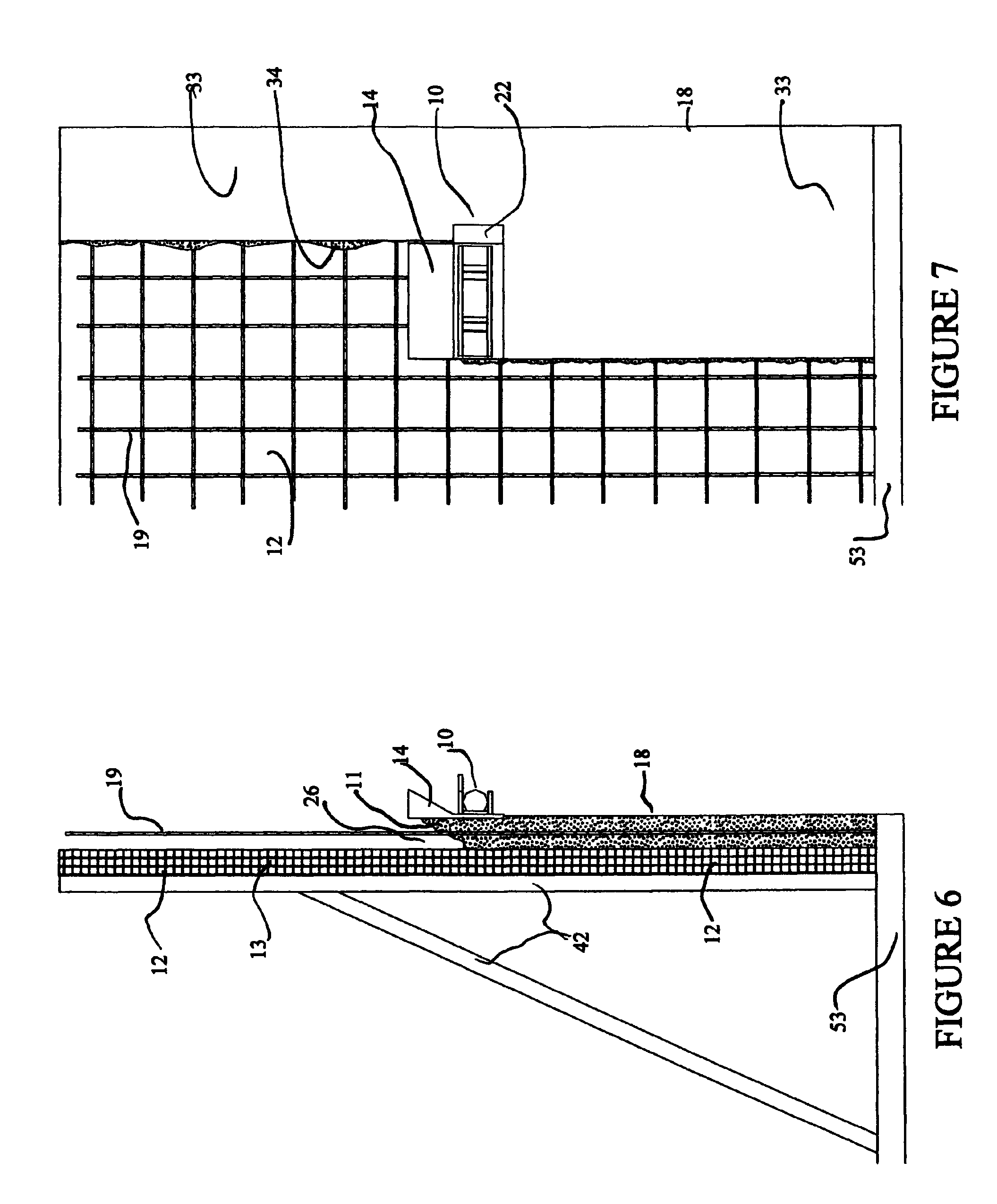Vertical vibrating screed
a vertical and vibrating technology, applied in the field of vertical vibrating screed, can solve the problems of inflexibility to switch from horizontal to vertical movement, inability to cast tall and thin building walls, and slip form prior art is also highly inflexible, and achieves the effect of low cost and high flexibility
- Summary
- Abstract
- Description
- Claims
- Application Information
AI Technical Summary
Benefits of technology
Problems solved by technology
Method used
Image
Examples
Embodiment Construction
[0050]The present invention discloses a method of casting concrete walls, columns and other vertical structures or sloped structures such as roofs, by use of a vertically oriented screed and utilization of the thixotropic properties of wet concrete. Freshly mixed concrete and other cementicious materials that have a zero-slump, no-slump or low-slump all contain a high degree of thixotropy and are thereby highly thixotropic. Throughout the following detailed description the term low-slump concrete shall include zero-slump and no-slump concrete and shall also refer to other highly thixotropic cementicious materials. In addition, the term vertical shall include anything sloped so that a vertical structure includes a sloped structure such as a sloped roof and vertically oriented includes a slope.
[0051]FIG. 1 shows the vertical screed 10 placing low-slump concrete 11 into a vertically oriented casting area 26 bordered by a vertically oriented screed face 15 of the vertical screed 10 on t...
PUM
| Property | Measurement | Unit |
|---|---|---|
| area | aaaaa | aaaaa |
| thixotropic | aaaaa | aaaaa |
| area | aaaaa | aaaaa |
Abstract
Description
Claims
Application Information
 Login to View More
Login to View More - R&D
- Intellectual Property
- Life Sciences
- Materials
- Tech Scout
- Unparalleled Data Quality
- Higher Quality Content
- 60% Fewer Hallucinations
Browse by: Latest US Patents, China's latest patents, Technical Efficacy Thesaurus, Application Domain, Technology Topic, Popular Technical Reports.
© 2025 PatSnap. All rights reserved.Legal|Privacy policy|Modern Slavery Act Transparency Statement|Sitemap|About US| Contact US: help@patsnap.com



